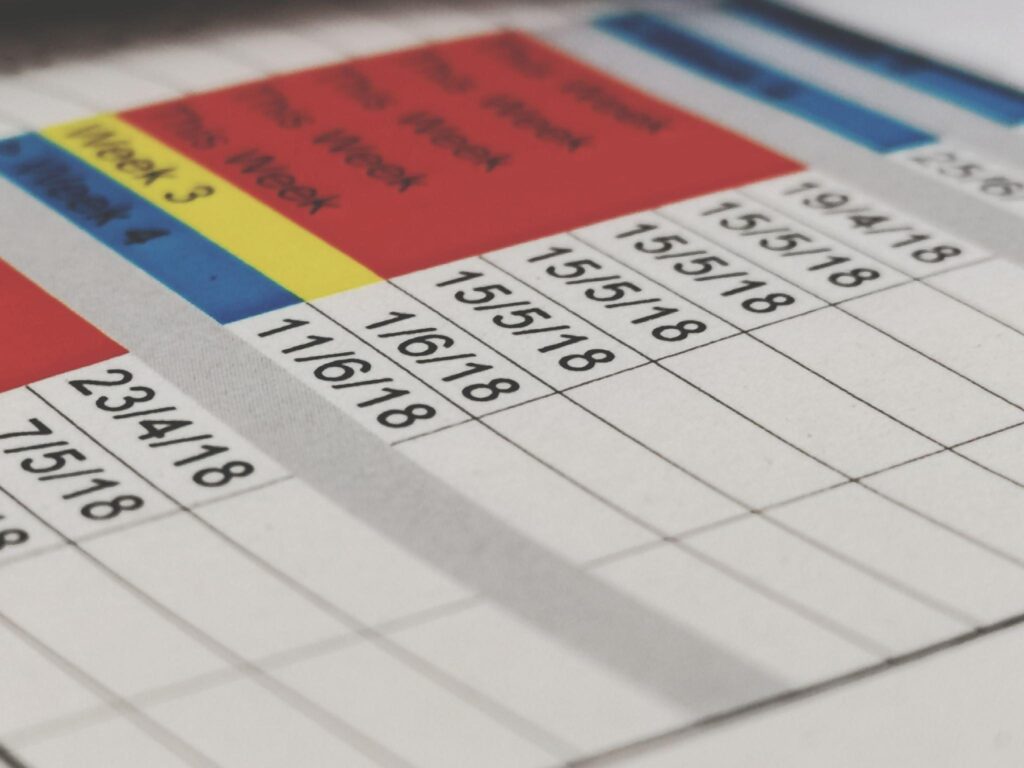The creation of a product involves several intricate steps. A finalized product, of course, is the result, while the initial point is creating your fashion flat sketches.
A tech pack is when a designer gives technical instructions and specifications to the manufacturer on how to make the garment. A spec sheet fashion or measurement table is a part of this. So what information does a garment spec sheet include, and how should it be properly prepared?
What Is A Garment Specification?

A garment specs sheet for clothing is a document that includes a sketch of the garment’s design, the fabric’s composition, and other information. It is given by the buyer to the merchandisers of clothing at the start of an export order for clothing. Buyers typically send garment specification sheets to merchandisers in soft copy.
A key document for each garment’s manufacturing is the garment specification sheet fashion design. The primary goal of delivering garment fashion spec sheets to the manufacturer is to streamline the entire manufacturing process. I’ll offer a thorough overview of the garment specification sheet here due to its significance in the ready-made clothing industry.
- Conceptualization of the product: Sketch or tech pack design refers to the needed item’s basic appearance. Buyer confirmation is provided. By using the computer, he can succeed.
- Chart for measurement: The needed item’s varied sizes are measured using a measurement chart or garment measurement sheet. Following this sheet, a pattern must form.
- Printing guidelines: The printing instructions include a variety of details on the print that is needed for the item. Printing instructions include things like print size and position.
- Instructions for embroidering: The various forms of information regarding the needlework needed for a specific object are contained in embroidery instructions. The term “embroidery instruction” refers to things like embroidery size and placement.
- Stitch instructions: Stitch instructions provide detailed information on the stitch that is needed to complete the item. Stitch instruction refers to things like the stitch type and stitches thread types.
- Instructions for washing clothing: These instructions include a variety of wash methods that may be necessary at times. Garment washing instructions cover things like wash kinds, softness, and hardness.
- Instructions for accessories: The instructions for accessories provide various details on the kinds of accessories that are necessary to complete the outfit.
- Various label instructions: Label instructions include information on a variety of labels, including size, care, and major labels.
- Necessary remarks about the product: If customers expressed opinions on the necessary processes for making apparel.
Why Is Using A Garment Tech Pack Or Spec Sheet Required?

A reputable sewing manufacturer will produce a sample and provide a pricing quote swiftly. They require the specific details contained in your tech pack to accomplish this. If the manufacturer must infer the specifics and they infer them incorrectly, they will lose time, and time is money. Fashion businesses that can convey their needs succinctly and one time are preferred by factories so that their staff can provide accurate price quotes and samples the very first time.
A well-done tech pack provides the sewing factory confidence that there won’t be any big adjustments and demonstrates to the manufacturer that the designer knows what they want. The enemy is changing on both sides. Utilize a garment tech pack or spec sheet to effectively explain all the information about your garment.
What Is The Meaning Of The Spec Sheet?
What is Spec Sheet? A specifications sheet, also known as a spec sheet, is a document that provides an in-depth description and explanation of a product’s characteristics and functionalities.
In other words, the garment manufacturer’s specification sheet contains information on a product’s specifications that buyers and end users should be aware of. In the information technology industry, product specification sheets are frequently provided to clients by businesses to describe the technical intricacies of how their software or hardware functions.
How Do You Make A Garment Spec Sheet?

A tech pack often called a garment specification sheet, is a document that includes comprehensive details about your clothing product spec sheet design. It includes information such as size measurements, care label directions, artwork placement, fabric details sheet, and packing guidelines.
Your comprehensive tech pack is used by factories to estimate costs and produce samples. The procedures for creating a spec sheet for garments. Making a fabric specifications sheet involves the processes listed below.
Step 1: Create A Specification Sheet Template
You must first create a spec sheet template before you can create one for the new design. To create the specification sheet template, utilize an Excel spreadsheet. As an alternative, you can use software made specifically for creating spec sheets for garment products.
Step 2: Complete The Design’s Fundamental Information
These entire details are listed at the top of the sheet:
- Product style and code, product description, and company logo
the season of the fashion - Customer Name Fabric Type
Step 3: Create A Technical Sketch Of The Garment

A specification sheet’s front page often includes images of the product’s front and backline sketches. The drawings/sketches are typically created with Adobe Illustrator, though they can also be done by hand.
A flat sketch is a technical, two-dimensional drawing of a garment that is created with all the relevant details in mind. Technically speaking, clothing is an illusion. In the clothing industry, it is utilized to display all of the garment’s details. Simple solid lines serve as an illustration of the outfit. They could be created by hand or using Adobe Illustrator software.
Step 4: Detail All The Finished Garments’ Measurements
The fit of the garment is greatly influenced by the dimensions. At every level of sample development, the garment specifications are consulted. Measurements are used by pattern grading for fashion makers as a basic indication of the size and fit of a certainly finished garment. Around the world, people adhere to many measurement standards.
Knowing the many places of measurement is crucial, and some of them are as follows:
- Body Length is the distance along the garment from the shoulder’s highest point to the sweep at the bottom.
- Measured 1″ below the armhole, from edge to edge, across the chest.
- Measured horizontally from edge to edge, ending at a certain point below HPS, is the waist.
- Side seam-to-seam measurement at the bottom hem
- Measured from HPS along the seam or the natural fold line to the outer shoulder border is the shoulder seam.
- Measure straight across the front from the designated position below the HPS to the armhole edge.
- Measure straight across the back from the designated position below the HPS to the armhole’s edge.
- Bicep: Measured straight across from edge to edge parallel to the sleeve opening, 1″ below the armhole.
- Measure from edge to edge along the cuff or sleeve opening.
- Front Neck Drop: Measuring from the top of the front neck to the back neck seam.
- Back Neck Drop: The distance between an imaginary line and the top border of the back neck seam.
Step 5: On The Specification Sheet, The Technical Details

The technical details are included in the fourth section of a spec sheet. This relates to any skills you’ll need for your clothes design, including colors, fabric information, machines, trims, and more. Again, depending on the cloth you select for your product, processes, and machinery will vary, just like measurements.
Some top Advice For Building a Spec/Tech Pack
Knowing the best practices for technical files is crucial since, once your samples have been accepted, this crucial tool will let you migrate production to any manufacturer worldwide. The Tech Pack must be thorough, accurate, and contain the following information:
- Technical drawings – A front and rear view of the garment in a clear line drawing. Even if producing a crisp line drawing by hand is entirely acceptable, using a computer will make it look more professional.
- Any photographs referring to finishes and features that you would like to apply to or include in your products are considered reference materials. Working with manufacturers that are located all over the world frequently results in communication issues due to language hurdles or simply naming the same thing different names, thus it is always better to demonstrate what you want visually.
- Examples of unique processes and finishes. It is good to provide examples so that there is no misunderstanding regarding the finishes and production methods used on your clothing.
- Packaging details – Are the products contained in boxes or cellophane bags? Make your directions clear and specific. Think about the path the goods took, not just from the production to you or your warehouse, but also after that.
- A pattern is an accurate pattern of clothing that contains all the necessary details. The factory occasionally provides a service for creating patterns. As an alternative, you’ll need to find a pattern cutter.
- Graded Specification with Points of Measure This is a list of measurements for the different sizes in which the garment will be produced.
- Test requirements: These are sometimes disregarded and undervalued while being crucial for ensuring lifespan, performance, and ultimately repeat business and brand loyalty from customers.
- Quality Control – The requirements for quality control are covered in this section.
FAQs
Are You In Need Of A Tech Pack Pattern?
A pattern and sewing sample are essential to each pre-production package. If you are not skilled in pattern grading or sewing, you might want to hire someone to complete these tasks so that you can include them in your tech pack.
Do The Spec Sheet And Tech Pack Match Up Exactly?
The specification sheet is sometimes referred to by the name “spec sheet.” The Technical Package, which contains all the supplies required to create the clothing, including everything required for mass manufacturing, finishing, and packing, includes the spec sheet.
Final Words
A spec sheet, keep in mind, is a list of POMs that specify the dimensions of your finished garment. One of the many papers in your tech packs is a spec sheet. The directions for your manufacturer on how to make your product are included in a technical package.







